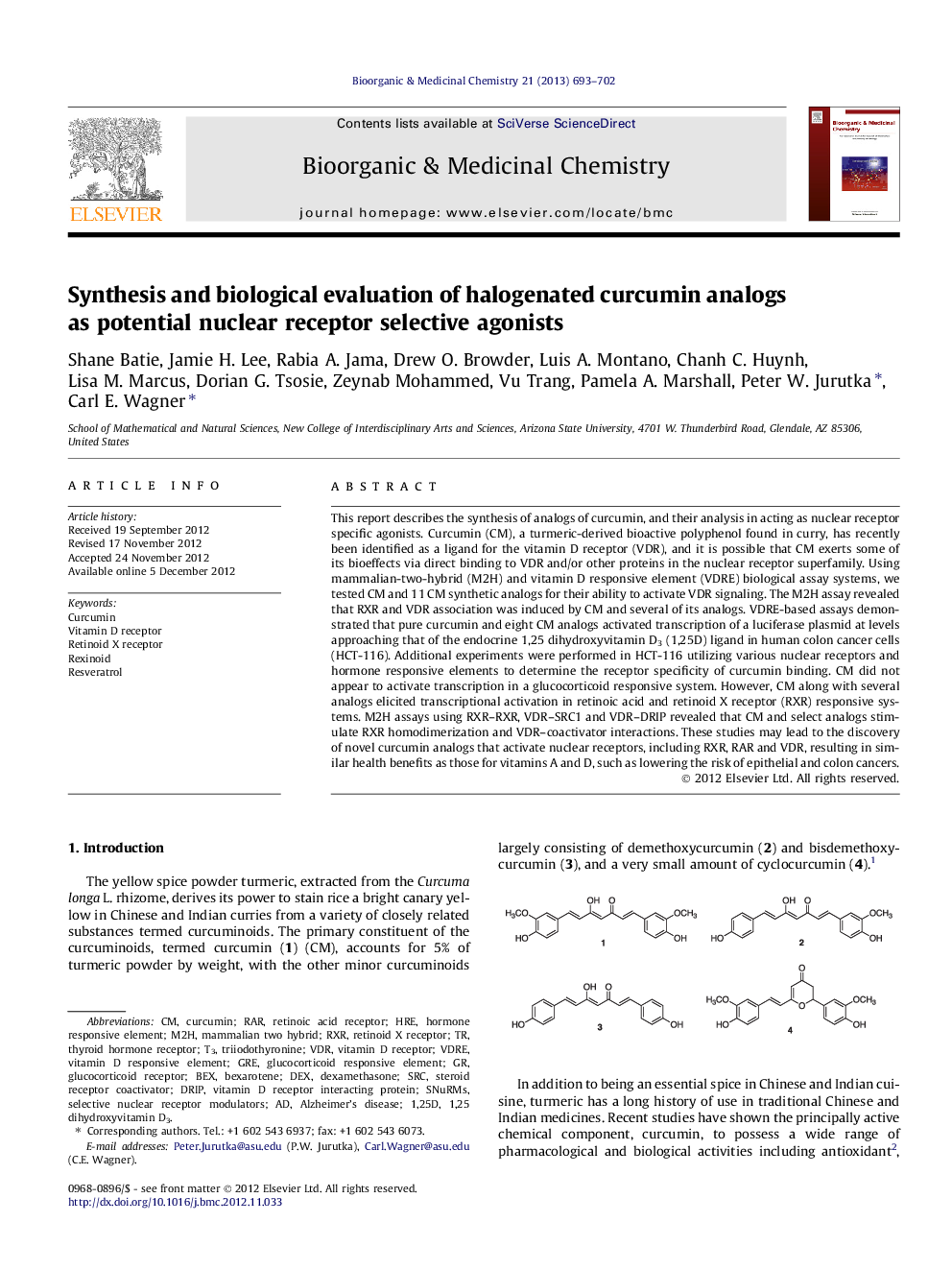| کد مقاله | کد نشریه | سال انتشار | مقاله انگلیسی | نسخه تمام متن |
|---|---|---|---|---|
| 1358653 | 981352 | 2013 | 10 صفحه PDF | دانلود رایگان |

This report describes the synthesis of analogs of curcumin, and their analysis in acting as nuclear receptor specific agonists. Curcumin (CM), a turmeric-derived bioactive polyphenol found in curry, has recently been identified as a ligand for the vitamin D receptor (VDR), and it is possible that CM exerts some of its bioeffects via direct binding to VDR and/or other proteins in the nuclear receptor superfamily. Using mammalian-two-hybrid (M2H) and vitamin D responsive element (VDRE) biological assay systems, we tested CM and 11 CM synthetic analogs for their ability to activate VDR signaling. The M2H assay revealed that RXR and VDR association was induced by CM and several of its analogs. VDRE-based assays demonstrated that pure curcumin and eight CM analogs activated transcription of a luciferase plasmid at levels approaching that of the endocrine 1,25 dihydroxyvitamin D3 (1,25D) ligand in human colon cancer cells (HCT-116). Additional experiments were performed in HCT-116 utilizing various nuclear receptors and hormone responsive elements to determine the receptor specificity of curcumin binding. CM did not appear to activate transcription in a glucocorticoid responsive system. However, CM along with several analogs elicited transcriptional activation in retinoic acid and retinoid X receptor (RXR) responsive systems. M2H assays using RXR–RXR, VDR–SRC1 and VDR–DRIP revealed that CM and select analogs stimulate RXR homodimerization and VDR–coactivator interactions. These studies may lead to the discovery of novel curcumin analogs that activate nuclear receptors, including RXR, RAR and VDR, resulting in similar health benefits as those for vitamins A and D, such as lowering the risk of epithelial and colon cancers.
Figure optionsDownload as PowerPoint slide
Journal: Bioorganic & Medicinal Chemistry - Volume 21, Issue 3, 1 February 2013, Pages 693–702